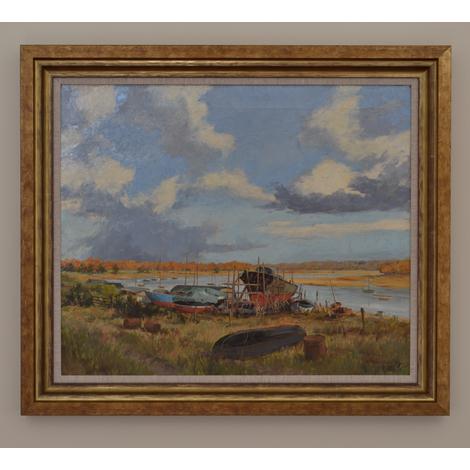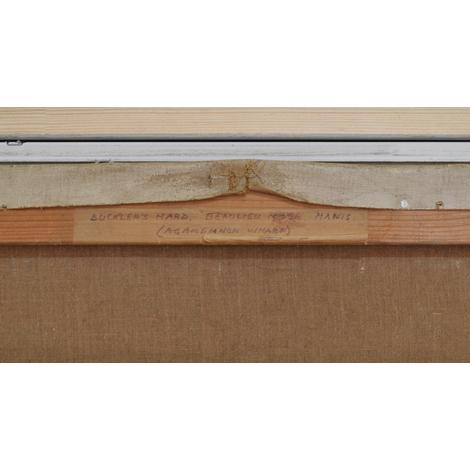Buckler's Hard, Beaulieu River, Agamemnon Wharf A Victor Coverley-Price
Buckler's Hard is a peaceful haven on the banks of Beaulieu River, Hampshire. There is a long history of shipbuilding on this estuary: wooden-walled warships were built for Nelson's fleet, from timber taken from the surrounding New Forest. Coverley-Price - the adventurer and artist - has painted the Wharf where Nelson's favourite ship, HMS Agamemnon,was built. Her keel was laid down in 1777 and she was commissioned in 1781, under Captain Benjamin Caldwell. She started life serving with the Channel Fleet, fighting in a successful battle against the French at Ushant, an island off Brittany, as part of the American War of Independence. The ship then went on to greater things: Nelson served as her Captain in 1793-96. She was then one of the ships in Nelson's column for the Battle of Trafalgar, 1805.
Coverley-Price's picture includes no people at all; just a scatter of boats and glimpses of the sinuous River and sand-spits. Probably painted towards the end of his life, when he was exploring the coasts and countryside of Britain, the dramatic contrast between this quiet scene and its past as a busy, commercial shipbuilding wharf, with a major role to play in Britain's history, must have appealed to the artist. He would, surely, have been very conscious of the industry and significance once woven into this place and aware of the subsquent changes it had witnessed. Yet the scudding clouds and the luminous light which bathes the whole landscape lend a blithe optimism to the scene, excluding any hint of melancholy.
49.5cms x 59.5cms
63cms x 73cms


